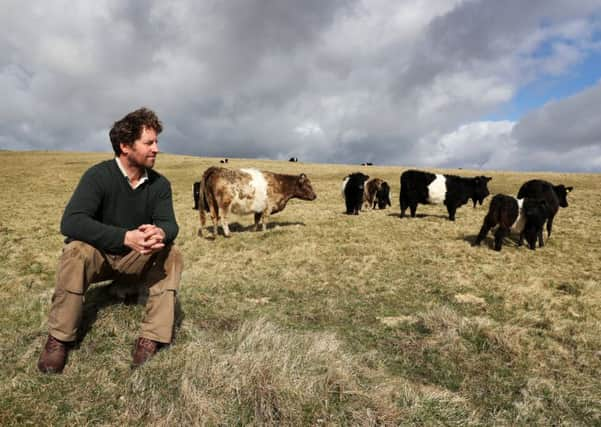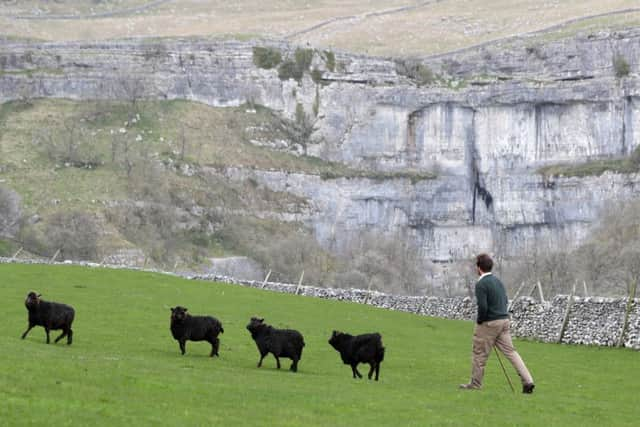Farm of the Week: How the return of cattle to the hills paid dividends


“In 2003 there was a relatively small conservation grazing programme called The Limestone Country Project. Selected areas of limestone pastures had been identified where it was felt that reintroducing cattle would bring a positive impact on biodiversity, enabling greater plant life and wildlife, and it worked. What it has done for our farm is show us what can be achieved by adopting low cost, grass fed livestock and we are now applying similar principles to our sheep flock.”
Sheep had always been the mainstay of what amounts to around 1,100 acres of land either owned or rented by Neil and his parents Annie and John, but the Belted Galloways now play a pivotal role in the farm’s overall income.
Advertisement
Hide AdAdvertisement
Hide Ad“Three-quarters of the land we farm is above the moorland line and it’s all extremely rough and regarded as severely disadvantaged status. Getting involved in the Limestone Country Project meant we had to have a native UK breed and our choices were between the Galloway, Belted Galloway and Highland. We went for the ‘Belties’ for their hardiness, their looks and because we didn’t want horned animals. What we weren’t aware of at the time was the upward swing of demand for mature native beef and its fantastic taste that TV chefs are now championing. We haven’t looked back even though there was a long lead-in time before we began earning from them as they go for meat generally at between three- to four-years-old.”


Having set up his herd on a small scale and with a while to wait prior to his first beef harvest, Neil and those involved with the grazing project were buoyed by its initial success.
“I think the organisers were pleasantly surprised that what they planned was actually taking place. It also showed us that this farm business no longer had to be a wholly sheep enterprise.”
When the Limestone Country Project came to an end Neil rolled over his land into the Higher Level Stewardship Scheme. This brought about an increase in herd numbers and a rethink on how he should farm in the future.
Advertisement
Hide AdAdvertisement
Hide Ad“We now have around 25 suckler cows and keep all the offspring. This means we have around four years’ worth of stock with replacements or additions to the herd through the heifers, and the bullocks. All our bullocks go for meat at four-years-old and we are regular suppliers to Chris Wildman’s Town End Farm Shop in Airton just down the road, to other local butchers and we have recently been approached to supply the online butchery business Farmison based in Ripon.


“We’ve come into ‘Belties’ at just the time when people appear to have an increasing appetite for traditionally reared, native breed, 100 per cent grass fed beef. Our cattle are entirely grass fed, given no concentrates and never come inside. We’re also approved members of the Pasture Fed Livestock Association for both beef and lamb. It’s a guarantee that what you eat has only even been grazed on grass.
“By 2012 the cattle had become so extensive and at the same time low cost it turned out they were making money in their own right. They had turned into a regular income stream. That’s when we started looking at the sheep in more detail and having learned some valuable lessons from the Belted Galloways we decided to completely, or as much we could, take the costs out of that side too.
“Years ago we were up to 800 breeding ewes. By 2012 we had reduced to around 400-500 and now we have around 200 mainly pure Swaledales with a few Blue Faced Leicesters. We keep what we have for longer, graze them once again totally on grass and take them through to sell at two-years-old. When we had the bigger numbers I would work 60-70 hours a week with the sheep and employed another man. This way I am saving on labour time, we keep less stock and we’re able to market them far better.”
Advertisement
Hide AdAdvertisement
Hide AdNeil’s partner Leigh Weston manages a bunk barn and holiday cottage, which forms another part of the overall business enterprise at Hill Top Farm. It is owned by Annie and John who are celebrating its 30-year anniversary.
Neil’s Belted Galloways have been joined by two White Galloways bought from the annual autumn sale of Belted Galloways at Castle Douglas.
“The White Galloway is much more at risk and is lesser known. They’re beautiful cattle and although I was initially concerned over their hardiness because I thought the genetic lines might be narrow the opposite is the case.”